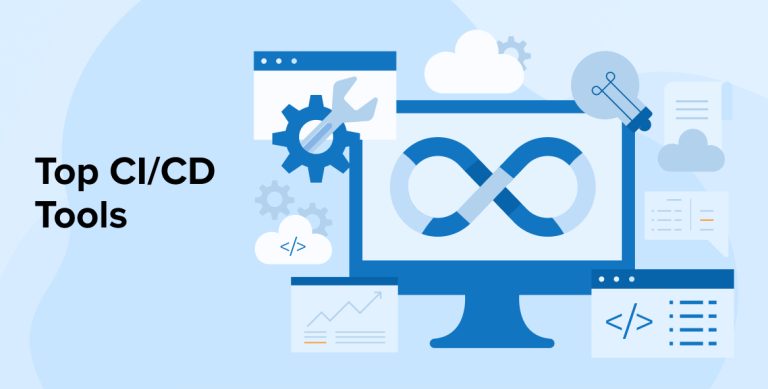
In the software development lifecycle, developers use the practice of Continuous Integration (CI) to constantly deploy code changes to the code repository. It facilitates rapid collaboration amongst software development teams using a shared code repository. Continuous Delivery(CD) is a method for releasing features at regular intervals. The time it takes to construct, release, and test software is something it hopes to cut down on.
People frequently use the terms continuous delivery (CD) and continuous integration (CI) interchangeably to describe the same categories of software.
In this tutorial, you’ll learn about the best CI/CD tools and the capabilities they offer so you can choose the correct one and leverage automation during any custom software development process.
1. What are CI/CD Tools?
Both continuous integration and continuous delivery tools focus on automating later pipeline phases, but are often presented independently when discussing levels of automation.
A Continuous Integration tool’s principal function is to automate the process of verifying that a developer’s changes are compatible with the most up-to-date version of the code. Plus any updates or new dependencies that were made by other members of the team. By using a Continuous Deployment solution, you can be sure that your code update will be thoroughly tested before being made public.
2. What is Continuous Integration?
— Vikas Rajput (@vikasrajputin) June 15, 2022
In the Dev team, multiple developers work on different modules where daily code is committed.
Dev tests their part of the code but many times they don't do integration testing.
For this, they need other's code as well this is where CI comes.
2. Best CI/CD Tools
Strategy, Code, Develop, and QA are the typical workflows of a CI/CD setup. Professionals call this chain of procedures a pipeline. These phases, and perhaps more, are used in virtually every tool process.
The best continuous delivery and continuous integration tools are as follows:
2.1 Jenkins
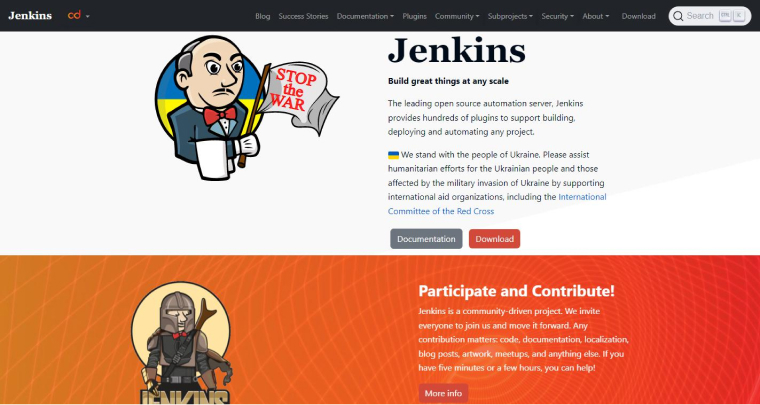
The development and continuous integration process is centralized on Jenkins, an open-source automation server. It’s a Java-based app that runs independently and comes in Windows, macOS, and Unix-like OS bundles. CI/CD tool Jenkins is used for developing, delivering, and automating software development projects, and it has hundreds of accessible plugins.
Jenkins Key Features:
- Fast and simple setup and upgrades across all platforms.
- Easy to navigate and understand UI.
- Easily customizable with a wealth of available plugins developed by the community.
- The UI makes it simple to set up various environments.
- Compatibility with master-slave architecture for decentralized build management.
- Schedules may be constructed using expressions.
- Pre-build phases can now execute shell and Windows commands.
- Allows you to get updates on the build’s progress.
Jenkins Pricing:
It is a free, open-source tool that has a thriving user base.
2.2 CircleCI
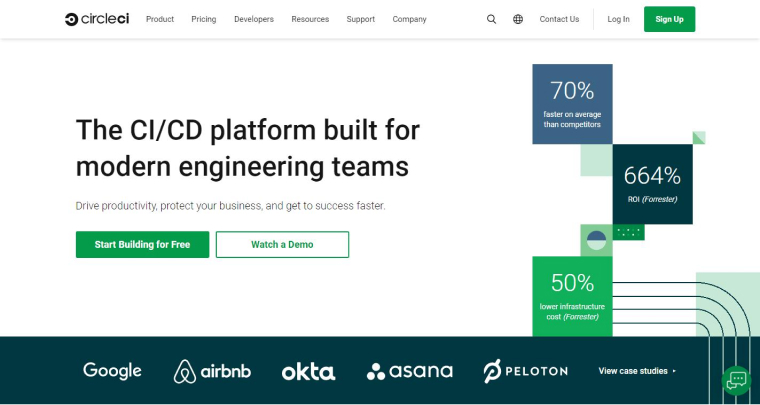
CircleCI is a highly adaptable continuous integration and continuous delivery framework. As the only CI/CD platform with FedRAMP certification and SOC II compliance, this solution distinguishes out for its dedication to safety.
Speed, assurance, and adaptability are also top priorities for this platform.
Furthermore, CircleCI’s continuous end-to-end testing helps developers to see issues early on. CircleCI also facilitates the establishment of automated workflows for building, testing, releasing, and saving time and effort of teams.
CircleCI Key Features:
- Supports integration with source code management platforms such as Github, Bitbucket, and GitHub Enterprise.
- Executes code in a Virtual Machine or container.
- Simple bug fixing.
- In-built parallelization automation.
- Rapid testing.
- Alerts are sent straight to your inbox or instant messenger.
- Deployment that is both constant and branch-specific.
- Superior adaptability.
- Package uploading with automated merging and bespoke instructions.
- Simple, quick, and endless building.
CircleCI’s confidence-boosting features will encourage the developers to release frequently. Your cycle time will reduce and the frequency of your deployments will rise as a consequence.
CircleCI Pricing:
- One job can be conducted without parallelism on all Linux plans at no extra cost. Three free extra containers are provided for open-source endeavors. You can view price options and select the appropriate plan(s) during the enrollment process.

2.3 Azure DevOps
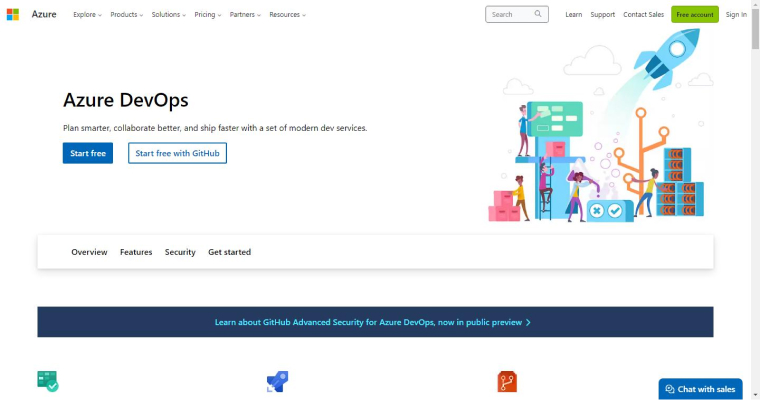
Azure DevOps is a cloud service that can be used to do automated development and testing of your software. Among its many features is continuous integration/continuous deployment, which enables code to be tested, built, and released at any time, to any location. It gives you access to Windows, Linux, and macOS pipelines in the cloud. Azure DevOps can be used for SCM in the same way that GitLab can.
You can invest a few hours addressing errors and more time being engaged by automating your builds and deploys using Azure DevOps Pipeline and Azure Artifacts. You can develop, validate, and release apps developed on GitHub using Azure DevOps as your choice CI/CD tools. In addition, the comprehensive connection with GitHub checks, pull requests, and statuses ensures dependable, rapid builds across all platforms.
Azure DevOps Key Features:
- Allows developers to more easily construct and update robust, scalable applications.
- Allows containers to be deployed and scaled on a controlled Kubernetes.
- Using end-to-end development expertise to carry out event-driven, serverless code activities.
- By incorporating Azure Board, you have access to highly functional, engaging, and adaptable features. Scrum, Agile, and Kanban are just a few of the methodologies that have built-in support.
- It has a flexible price structure that adapts to your specific needs.
- The CI/CD pipeline is self-hosted.
Azure DevOps Pricing:
- Commercial
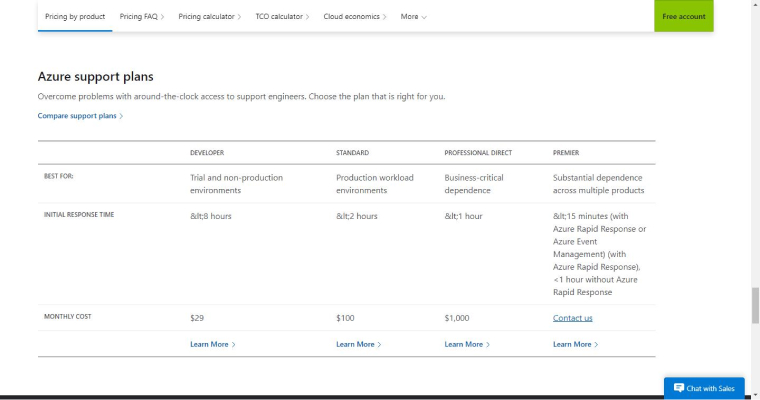
2.4 Github Actions
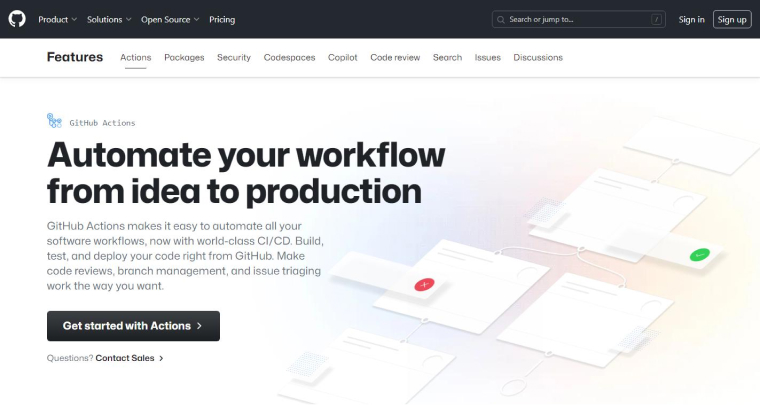
Using GitHub’s Actions, which provides first-rate CI/CD, you can easily automate your software development process. It has surpassed all other CI/CD tools in popularity. The code on GitHub can be built, tested, and deployed in its entirety. In addition, it integrates with everything you need to automate the entire development process. It offers action for just about anything you can think of, from deploying a web service to building a container to automatically welcoming new customers to open-source projects. In addition, combining GitHub Actions with Packages streamlines package administration across the board, from version updates and dependency resolution to instantaneous global CDN distribution.
GitHub Actions Key Features:
- Includes compatibility for containers, ARM, Windows, Linux, and macOS.
- Aids in expediting matrix-based processes.
- Real-time operations can be better understood with the help of live logs.
- Includes a hidden compartment for storage.
- Allows you to use cloud-based or locally-hosted virtual machines with self-hosted runners.
GitHub Actions Pricing:
- Free for use with publicly available repositories, with sliding scale charging for private ones up to 2,000 free build minutes.
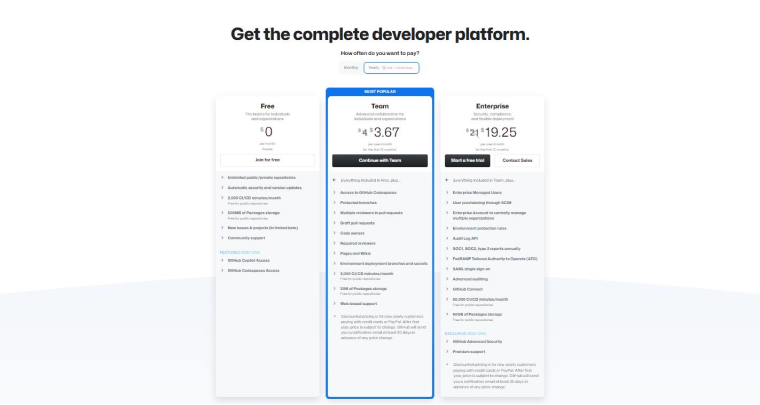
2.5 GitLab
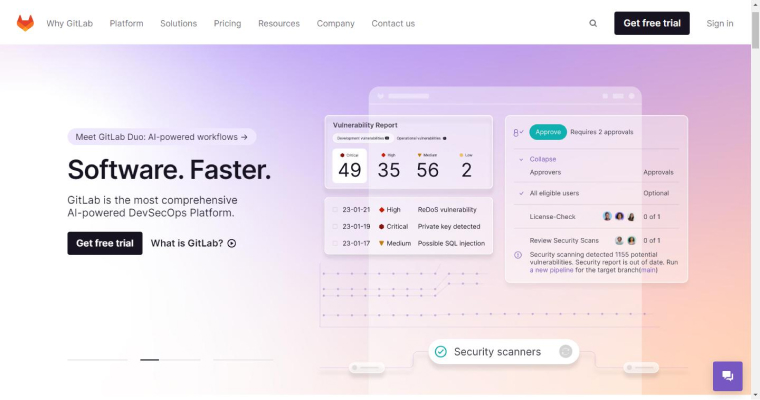
One alternative to GitHub that offers continuous integration and continuous delivery of software is GitLab.
Automatic application detection, construction, testing, deployment, and monitoring are all possible with this CI/CD tools thanks to its Auto DevOps function and its ability to interface with a Kubernetes cluster.
GitLab’s branching features allow programmers to write, inspect, and control data for their software projects. It also includes scanning tools for dependency and container scanning as well as software testing tools for SAST and DAST.
GitLab is a robust hub for software development teams of any size. In addition to its excellent Continuous deployment and Continuous integration tool, GitLab also provides a replacement for GitHub in the kind of a Git versioning platform. The platform engineering tool in GitLab is robust. You’ll notice a huge drop in development effort once your team has these tools at their disposal.
GitLab Key Features:
- You can see, create, and manage programs and project data using branching tools.
- By devising, creating, and controlling protocols and project data with a single distributed version control system, rapid development and the release of business value can be accomplished.
- It provides scalability and a singular source of truth for teams collaborating on initiatives.
- Makes it easier for delivery teams to use CI by automating the process of building, integrating, and testing code.
- Delivers safe applications while maintaining licensing compliance using container scanning, static application security testing (SAST), dynamic application security testing (DAST), and dependency scanning.
- Aids in streamlining and speeding up the process of delivering software.
GitLab Pricing:
- GitLab is a free, open-source version of a commercial product. You can host SaaS on GitLab, on your own server, or in the cloud.
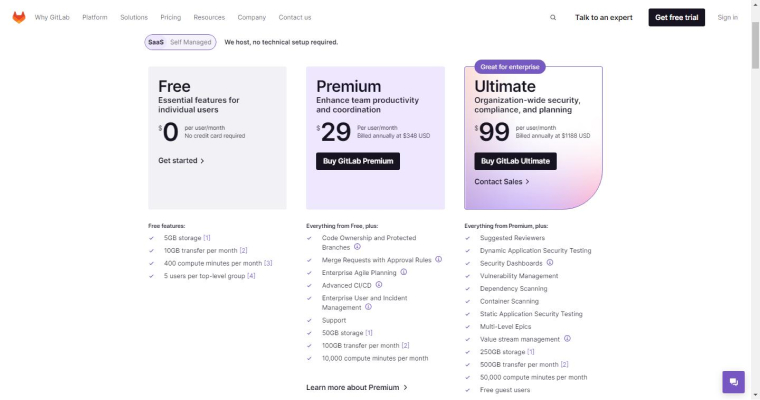
2.6 Harness
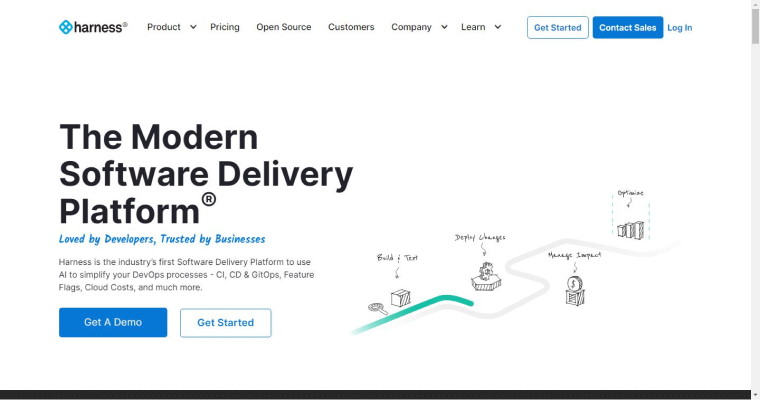
Harness makes use of virtual machines to streamline, speed up, and safeguard the CI/CD process. To further automate processes, this application creates a unified pipeline for the whole organization.
Harness also automates canary and blue/green deployments with ML/AI, doing away with the need for hand-coded scripts. Harness’s observability tools use the same ML technology to analyze logs and data in order to find bugs in poorly implemented systems automatically.
Also, with just one line, developers may test in a safe setting, switch feature flags for enhanced feature releases, and mold their organization-wide pipeline to their liking. With the power and flexibility provided by Harness, developers may examine and enhance key performance indicators like deployment frequency and cycle time.
Harness Key Features:
- Processes fueled by machine learning and AI.
- Developer-first experience.
- All customers, one pipeline.
- Cost control in the cloud is supported.
- DevOps automation in continuous integration and continuous delivery.
- Harness CD is an independent paradigm for continuous delivery.
- Offers scalable pricing for any organization’s needs.
Harness Pricing:
- Free plan for small startups.
- Team plan for growing companies. (Paid plan)
- Enterprise plan for large-scale businesses. (Paid plan)
- Prices for Team and Enterprise plans are available on inquiry.
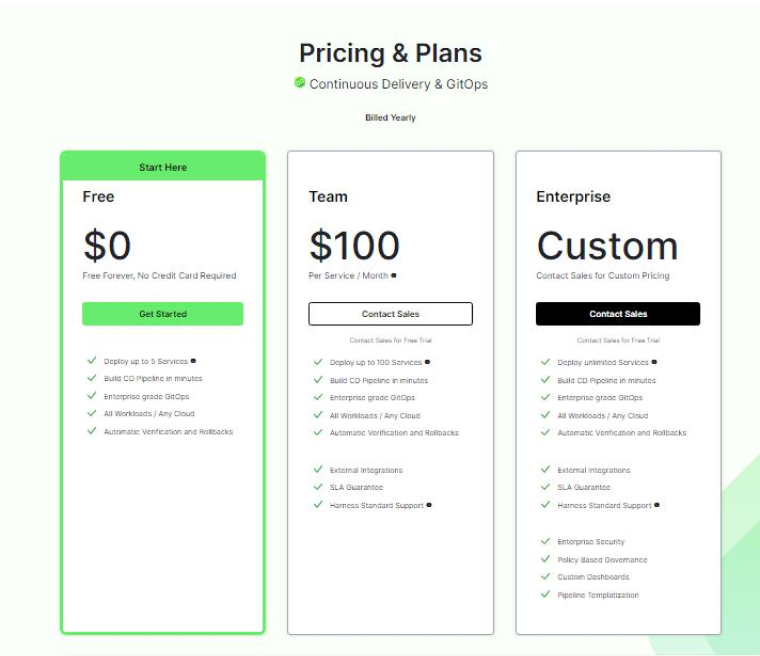
2.7 Bitbucket Pipeline
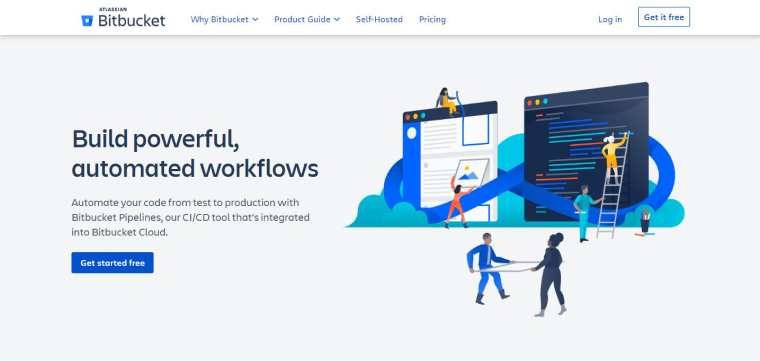
Bitbucket pipeline is a continuous integration and continuous delivery mechanism built into Bitbucket. It aids in the automation of code from testing to production and provides visibility into the operation of pipelines at any stage. In addition, it consolidates information about which software versions are running in specific environments into a single location. By using Continuous Delivery procedures, the software can be released more quickly.
Bitbucket Pipeline Key Features:
- Helps automate processes all the way from design to rollout.
- Provides a streamlined experience for those that host their code in Bitbucket’s repository.
- Allows for the seamless incorporation of project outcomes at every stage into Jira
Bitbucket Pricing:
- They offer three price models consisting of a free version, a standard version, and a premium version.
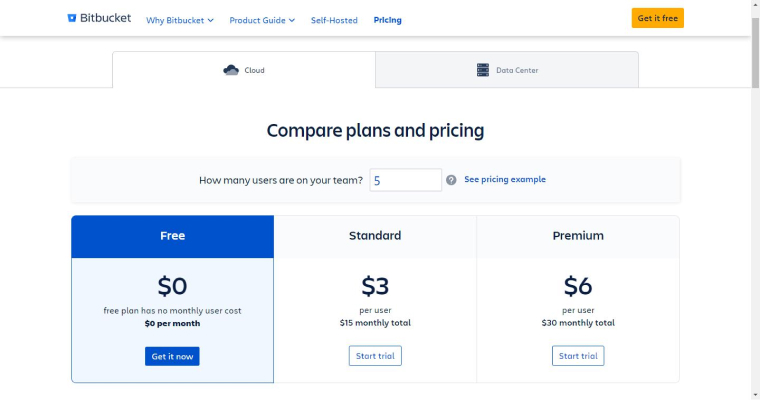
2.8 Travis CI
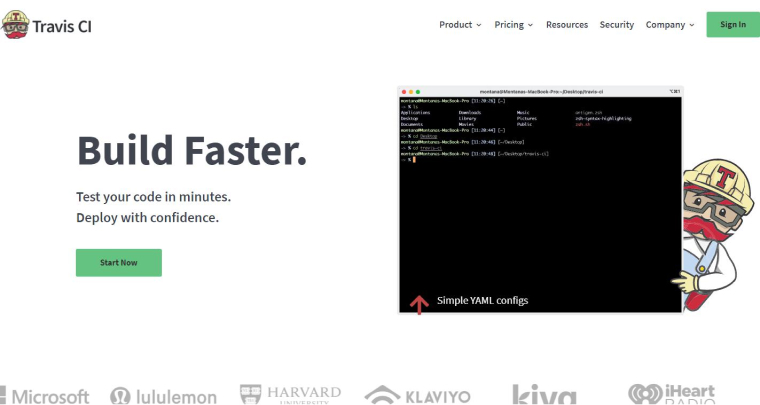
The Continuous Integration service offered by Travis CI was the first of its kind. Users may sign up, connect their preferred repository, and develop and test software projects. The most popular cloud code management systems, such as GitHub, GitLab, and Bitbucket, are fully supported.
There is no need for a dedicated server because Travis CI is hosted in the cloud and offers several automated CI solutions. This allows you to run software tests on a wide variety of hardware and software configurations.
Travis CI Key Features:
- Travis CI can support programming languages like Java, C#, Julia, and Python.
- Corporations concerned about security and confidentiality will be pleased to learn that Travis CI Enterprise, a self-hosted platform, seamlessly integrates with GitHub and Bitbucket.
- The GitHub Enterprise package of tools tightly couples with a specialized YAML syntax used to write CI/CD pipelines.
- Travis CI on the Cloud (or SaaS) is great for small-team and open source projects.
- It is compatible with common platforms and their runtime environments, such as Linux, MacOS, and Windows.
- Parallel developments across a wide variety of OSes, languages, and runtimes are possible with Travis CI’s build matrix feature.
- Travis CI’s interoperability with major cloud providers like AWS, Google Cloud, Kubernetes, Azure, and more makes it simple to integrate with these services.
Travis CI Pricing:
- The Core Plan starts at $69/month, and the Enterprise Plan, designed for commercial endeavors, determines pricing based on project complexity. There’s a free trial for 30 days.
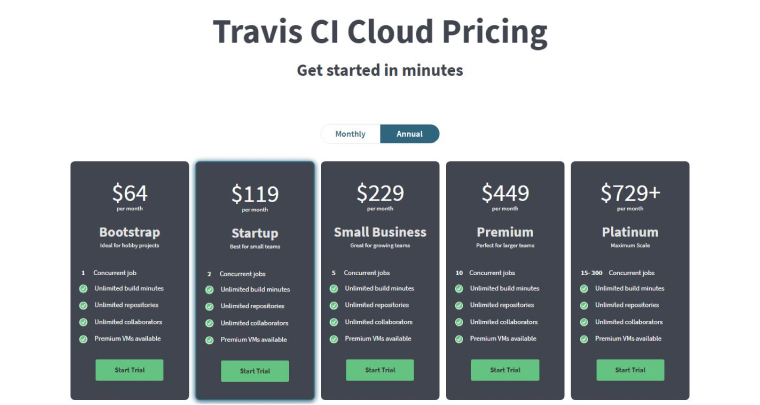
2.9 Terraform
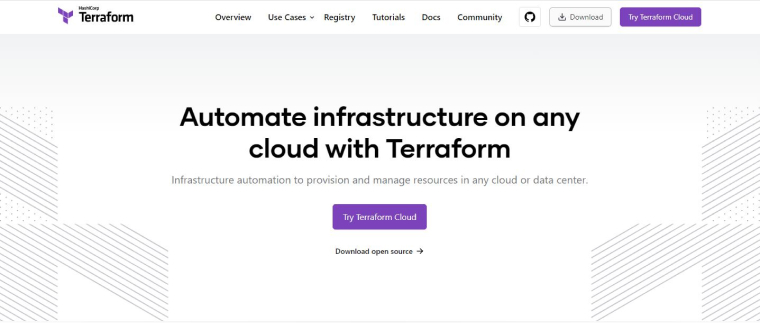
It is developed by HashiCorp, allows for centralized control of cloud resource configuration changes across many providers. It views cloud infrastructure as code, allowing it to handle hundreds of cloud resources with the same regularity and reliability as every other software venture.
Terraform Key Features:
- Infrastructure, as defined by Terraform, is the code that creates, manages, and maintains those resources.
- It uses code to keep an application’s structure up to date.
- It creates and manages a cloud-based system.
- Pluggable extensions are available in Terraform.
Terraform Pricing:
- They offer four price models consisting of a free version, a standard version, plus and an enterprise version.
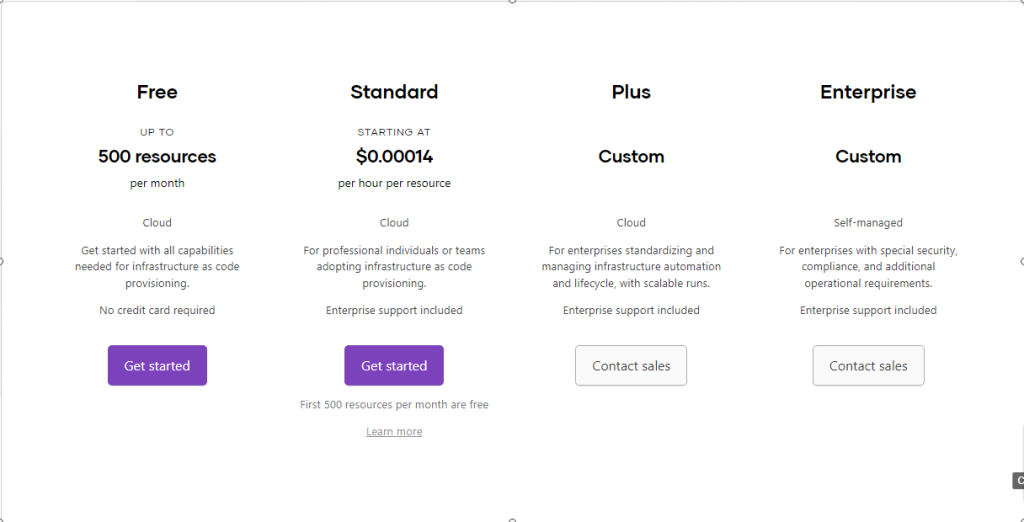
2.10 Semaphore
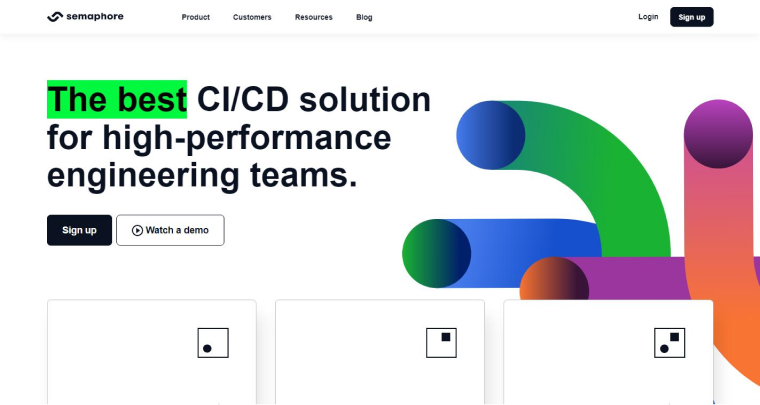
When compared to other CI/CD tools, Semaphore stands out because of the comprehensive support it provides out-of-the-box for single-repository projects. Plus, it’s compatible with popular continuous integration services like Travis and Circle CI.
Semaphore’s CI/CD pipelines allow for more rapid iOS app testing and deployment. Like the best CI/CD solutions, Semaphore allows you to set up separate channels for consecutive and concurrent developments.
Semaphore Key Features:
- Semaphore can automate the construction, testing, and releasing of software on different environments & platforms.
- Semaphore allows for instantaneous cloud deployment to Kubernetes using CI/CD in any Docker image.
- It works with several programming languages and mobile platforms, including C#, Python, Java, PHP, Ruby, and Rust.
- Standard integration with popular SCM tools like GitHub and Bitbucket.
- Instantaneous failure debugging is possible using Semaphore’s command line interface (CLI) for viewing logs. You can use SSH for monitoring alongside file transmission.
- You can find an in-depth examination of the testing efforts made by the team in the test reports section in Semaphore. They can get all the information they need by running the tests simultaneously.
- Self-hosted agents provide more management over the execution of tasks. You have full authority over the devices, operating systems, and programs that comprise your pipelines when using self-hosted agents.
Semaphore Pricing:
- In conventional CI services, the size of your subscription package constrains your options. Meanwhile, Semaphore 2.0 will automatically adjust to your team’s usage levels, so you only pay for the time you need it.
2.11 Buildbot
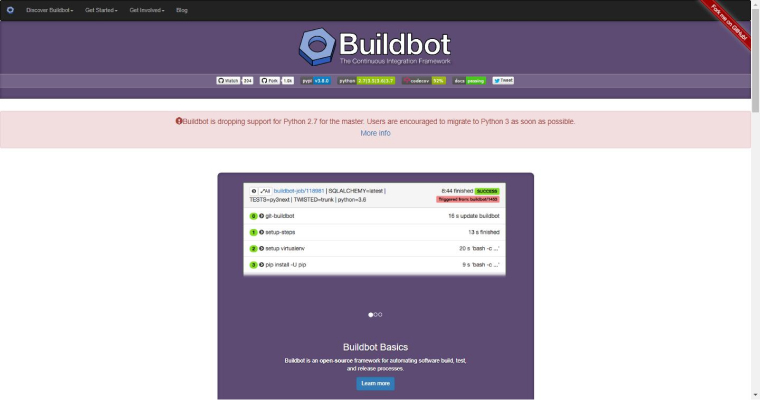
If you’re using Python 3.0 or later, Buildbot is basically a task scheduling tool. When the necessary resources become accessible, the system will automatically queue, run, and track jobs.
Buildbot requires a “master” and “workers” to function properly.The master keeps tabs on code repositories, assigns jobs to workers, and communicates the results to software developers and end users. The workforce can use a wide variety of OSes.
Buildbot Key Features:
- Buildbot provides continuous integration testing in addition to process automation of complex procedures, application execution, and software release management.
- Buildbot’s setup and installation process is painless.
- Buildbot supports Docker images.
- Running CI tools like buildbot and buildbot-worker from the command line enables you to manage the Buildbot master and workers with relative ease.
- There is no need to rerun tests on other platforms if you change something in one platform’s code.
- Buildbot’s distributed and parallel job execution capabilities allow the entire building and software testing process to go more quickly and accelerate delivery speed.
- Buildbot’s customizable features make it a great tool for construction industry professionals to implement novel uses for the technology.
Buildbot Pricing:
- Buildbot is available for no cost and is open source.
2.12 GoCD
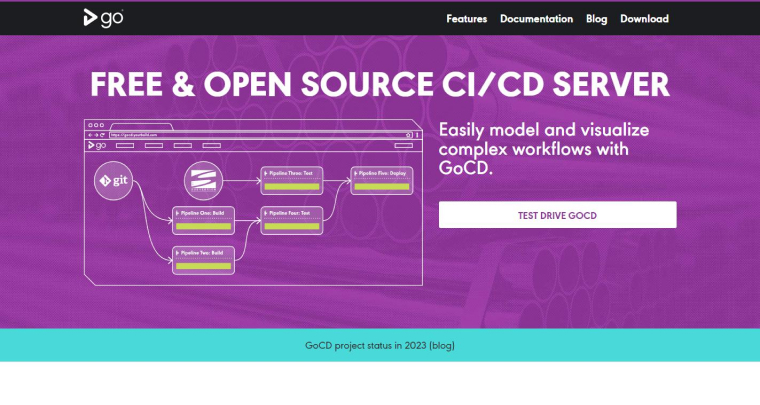
Instead of being a full-fledged CI/CD tool , GoCD is a continuous delivery platform. However, it works with a wide variety of CI technologies to round out CI/CD processes. The Value Stream Map feature is particularly useful since it allows businesses to better view their CD production lines.
It supports cloud-native deployment on platforms like Kubernetes, Amazon Web Services (AWS), and Docker, and is compatible with Windows, Linux, and Mac.
GoCD Key Features:
- GoCD simplifies dependency configuration.
- Unlike other CI/CD pipeline systems, it allows developers to write pipelines in YAML or JSON, a format that allows for the construction of a “pipeline as code.”
- The Visual State Machine (VSM) in GoCD is a real-time, all-encompassing depiction of the current status of the workflow.
- While Jenkins’ plugin ecosystem is more mature and well-established, GoCD’s is still developing and improving.
- It’s one of the best continuous integration/continuous delivery technologies, and it works with Windows, MacOS, Docker, and other platforms.
- Similar to other CI/CD pipeline technologies, GoCD’s requirements are straightforward. Parallel processing is available, which is essential for DevOps testing.
GoCD Pricing:
- GoCD is a free, open-source tool.
3. Benefits of Using CI/CD Tools
These CI-CD tools comes with numerous benefits to offer for better performance, here are some of them.
3.1 Faster Release Rate
Increased release frequencies are a direct outcome of the CI/CD methodology’s emphasis on rapid bug detection and fixing. Because the CI/CD methodology automates the development process, it reduces errors and enables faster feedback loops, which is beneficial for achieving frequent releases. Continuous integration/continuous delivery keeps code in a release-ready state by constantly combining codes and pushing them to production after rigorous testing.
3.2 Enhanced Teamwork
With a CI/CD system in place, programmers can collaborate and fix bugs in the code as they write it.
3.3 Better Productivity and Output
CI/CD solutions make it possible to gain insight into teams’ performance, enabling the early detection and elimination of obstacles. They also provide development teams with the freedom to customize their processes to suit their requirements, ensuring that they have all the tools at their disposal at all times.
3.4 Cost-Effective
By eliminating the need for repetitive manual work, CI/CD systems lead to cost reductions.
3.5 Reduce Programmer Friction
Tools for continuous integration and delivery help developers save time by automating routine operations. Some of them, for instance, help to speed up application deployment and patching by automating the container formation process.
3.6 Improved Scalability
With the help of CI/CD tools, businesses can keep up with the ever-increasing need for software systems, leading to greater scalability and the ability to support more users.
3.7 Simple Upkeep and Upgrade Procedures
Maintenance and improvements are essential to make a top-notch software product. Software developers using the CI/CD methodology may ensure that they regularly maintain and improve the product. However, it’s important to stress that in a CI/CD process, you should carry out maintenance during non-critical hours of operation.
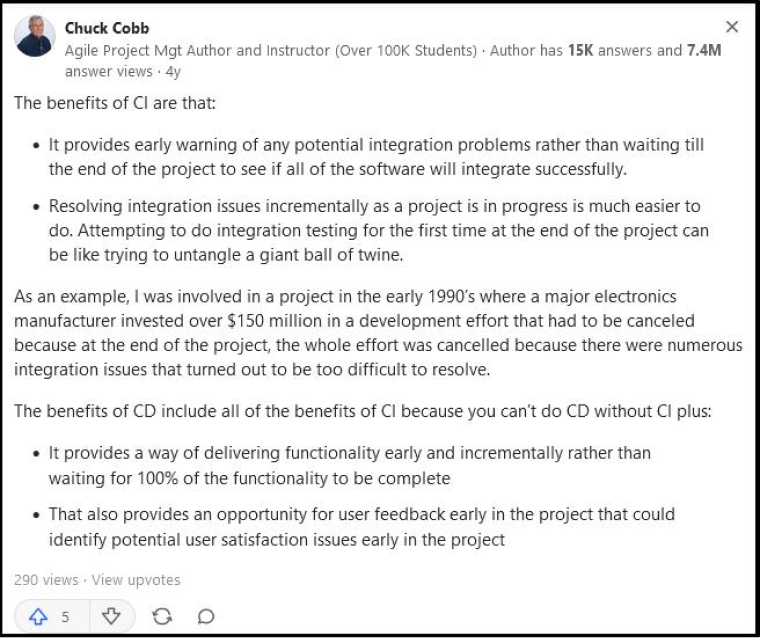
4. Conclusion
Automated solutions, such as continuous integration and continuous delivery tools, are complex yet have the potential to improve the reliability and accuracy of business processes.
The first step is picking a tool that works for your specific needs. The proper assets and instruments are necessary for any CI/CD strategy to succeed.
However, it might be difficult to keep track of everything, especially the cloud costs associated with data transport. If you want to get the most out of your cloud budget, you need to know where your money is going. TatvaSoft is your best bet if you need assistance with analyzing and making a plan for your business!
We hope this insightful list of CI/CD tools has been helpful in learning more about how to automate CI/CD.


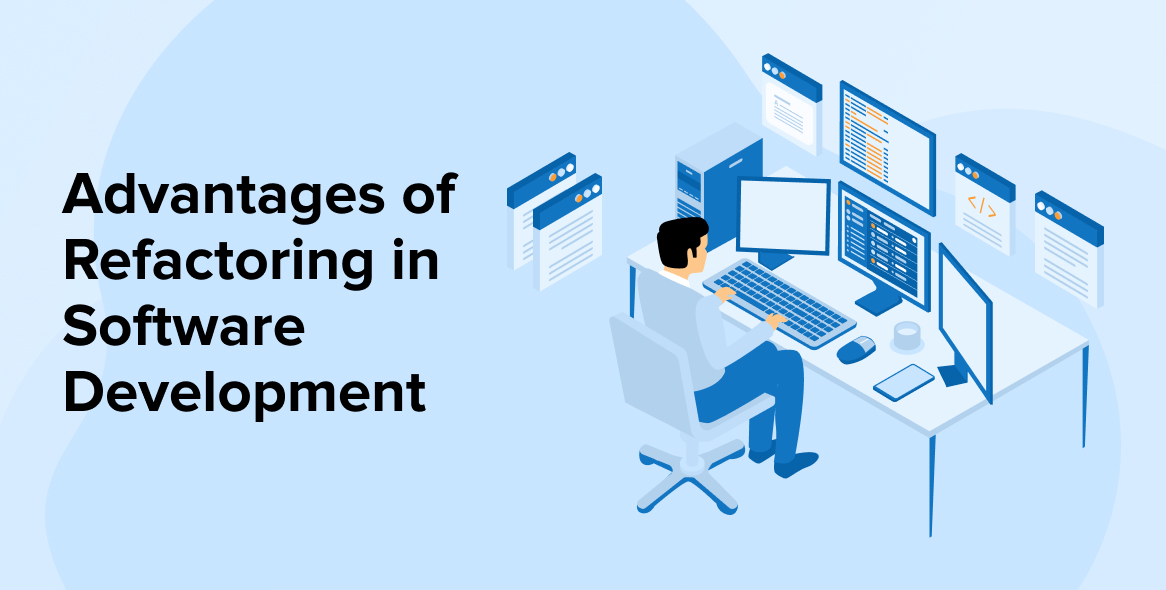

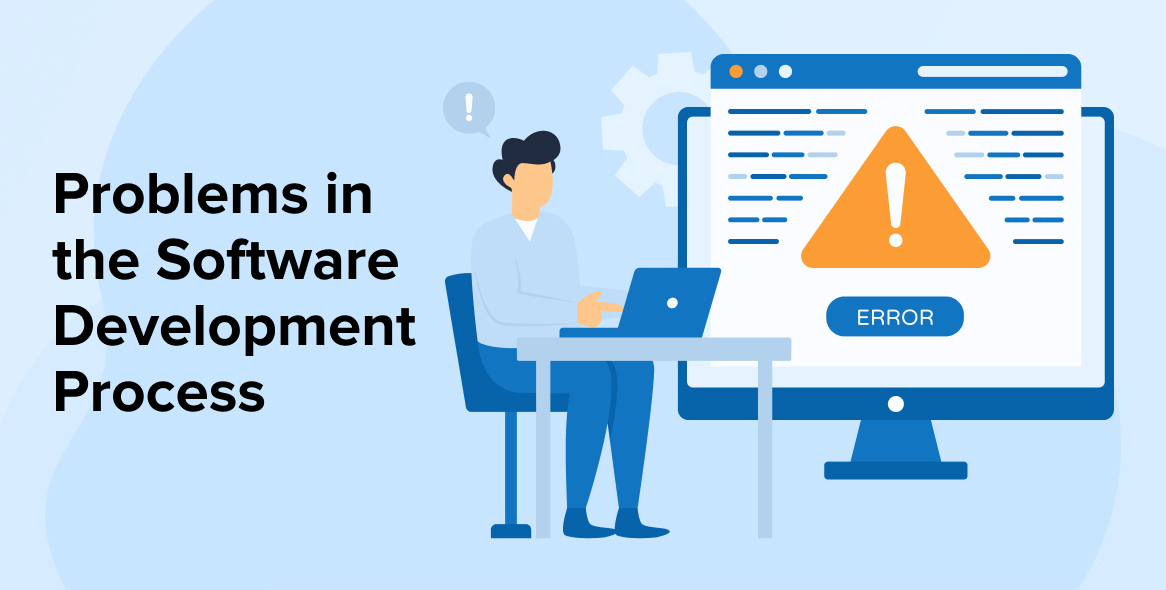

This article highlights the significance of automation, collaboration, and rapid deployment in CI/CD methodologies. Article mentioned top CI/CD tools which we can adopt in our deployment process.
This article provides a comprehensive overview of various Continuous Integration (CI) and Continuous Delivery (CD) tools. I like the article goes beyond tool descriptions, delving into the benefits of using CI/CD tools.